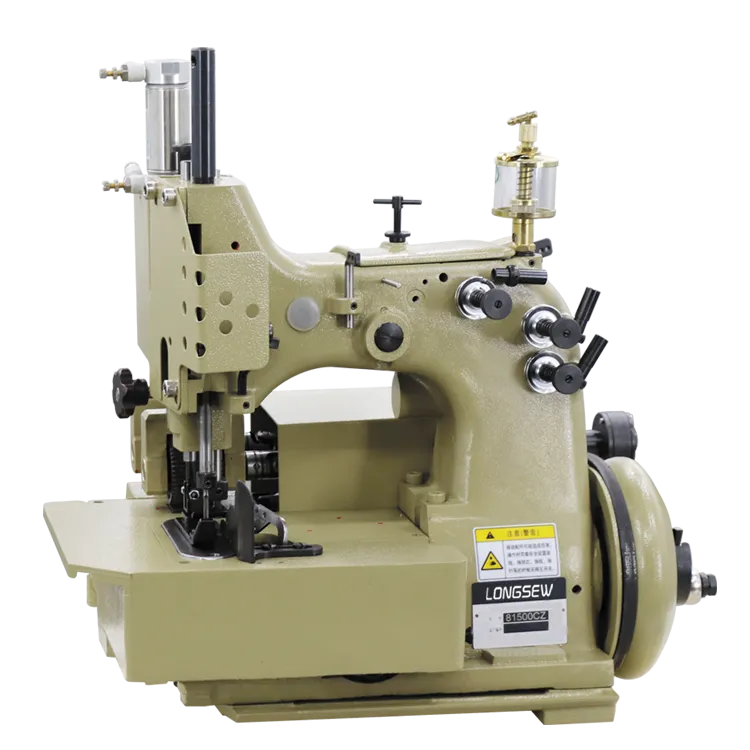Bag stitching machine with conveyor system for efficient packaging solutions
Advances in Bag Stitching Machines with Conveyor Systems
The modern manufacturing landscape is characterized by a growing demand for efficiency, precision, and automation. Among the myriad of machines that cater to these needs, the bag stitching machine with a conveyor system stands out as a crucial piece of equipment in industries ranging from agriculture to retail. This article will explore the significance, functionality, and innovations surrounding bag stitching machines integrated with conveyor systems.
Understanding Bag Stitching Machines
Bag stitching machines are designed specifically to seal and secure the contents of bags, ensuring that products are adequately protected during handling and transportation. These machines are commonly used for a variety of materials including paper, plastic, and jute. The stitching process involves sewing the open ends of bags to create a secure closure, which is essential for maintaining product integrity.
Traditionally, bag stitching processes could be labor-intensive, requiring manual handling and variable stitching quality. However, advancements in technology have led to the development of sophisticated automatic bag stitching machines equipped with conveyor systems that streamline production and enhance overall efficiency.
Benefits of Integrating Conveyor Systems
One of the primary advantages of incorporating conveyor systems into bag stitching machines is the improvement in operational efficiency. In traditional setups, bags would need to be manually moved from one stage to another, leading to potential delays and increased labor costs. A conveyor system automates this process, allowing for a continuous flow of bags through various stages of stitching, reducing the time required for handling and increasing overall productivity.
Additionally, conveyor systems can be designed to operate at varying speeds, accommodating different production requirements. This flexibility ensures that manufacturers can easily adjust to fluctuating demand, optimizing their operations without the need for substantial capital investment in additional machinery.
Precision and Quality Control
The integration of conveyor systems in bag stitching machines also enhances precision and quality control. Modern machines are equipped with sensors and automated controls that monitor stitching alignment and tension throughout the process. This technological integration minimizes human error, resulting in consistent stitch quality and reduced material wastage.
bag stitching machine with conveyor

Moreover, the ability to set specific parameters for stitching patterns and speeds allows manufacturers to create customized solutions for different products. Whether they are sealing bags of flour, animal feed, or retail goods, businesses can ensure that their packaging meets industry standards while also appealing to consumers.
Innovations in Technology
Recent innovations in bag stitching machines with conveyor systems include the adoption of advanced automation technologies such as robotic arms and AI-driven systems. These advancements not only enhance the precision of the stitching process but also introduce new capabilities like real-time monitoring and data collection.
For instance, some state-of-the-art machines can provide analytics on production rates, machine efficiency, and even predict maintenance needs before failures occur. This level of insight allows manufacturers to implement proactive measures, reducing downtime and saving costs associated with unexpected repairs.
Furthermore, developments in user interface design have simplified the operation of these machines. Operators can now easily input specifications and monitor performance through intuitive touch screens, making it accessible for users with varying levels of technical expertise.
Environmental Considerations
In today's environmentally conscious market, manufacturers are also focusing on sustainability in their operations. Bag stitching machines with conveyor systems can be designed to consume less energy and incorporate eco-friendly materials for packaging. This shift not only meets regulatory requirements but also appeals to the growing base of consumers who prioritize sustainable practices.
By selecting machines that are energy-efficient and utilize recyclable materials, businesses can significantly reduce their carbon footprint while still maintaining high production standards.
Conclusion
The evolution of bag stitching machines with conveyor systems represents a significant advancement in manufacturing technology. By enhancing efficiency, precision, and sustainability, these machines are not only meeting the demands of today’s market but are also setting the stage for future developments in the industry. As manufacturers continue to explore innovations and improve their processes, the integration of conveyor systems will remain a vital component of effective bag stitching operations. Embracing these advancements will be crucial for businesses aiming to stay competitive in an increasingly automated world.
-
Industrial Cylinder Arm Sewing Machine: Revolutionizing Heavy-Duty SewingNewsJul.28,2025
-
Cylinder Arm Sewing Machine: Perfect for Special Sewing ApplicationsNewsJul.28,2025
-
Cylinder Bed Sewing Machine: Essential for Sewing Complex MaterialsNewsJul.28,2025
-
Heavy Duty Sewing Machine: The Essential Tool for Industrial ApplicationsNewsJul.28,2025
-
Computerized Pattern Sewing Machine: Revolutionizing Precision StitchingNewsJul.28,2025
-
Heavy Duty Industrial Sewing Machine: Power Meets PrecisionNewsJul.28,2025
-
Leather Sewing Machine: The Industrial Standard for Tough MaterialsNewsJul.18,2025





























